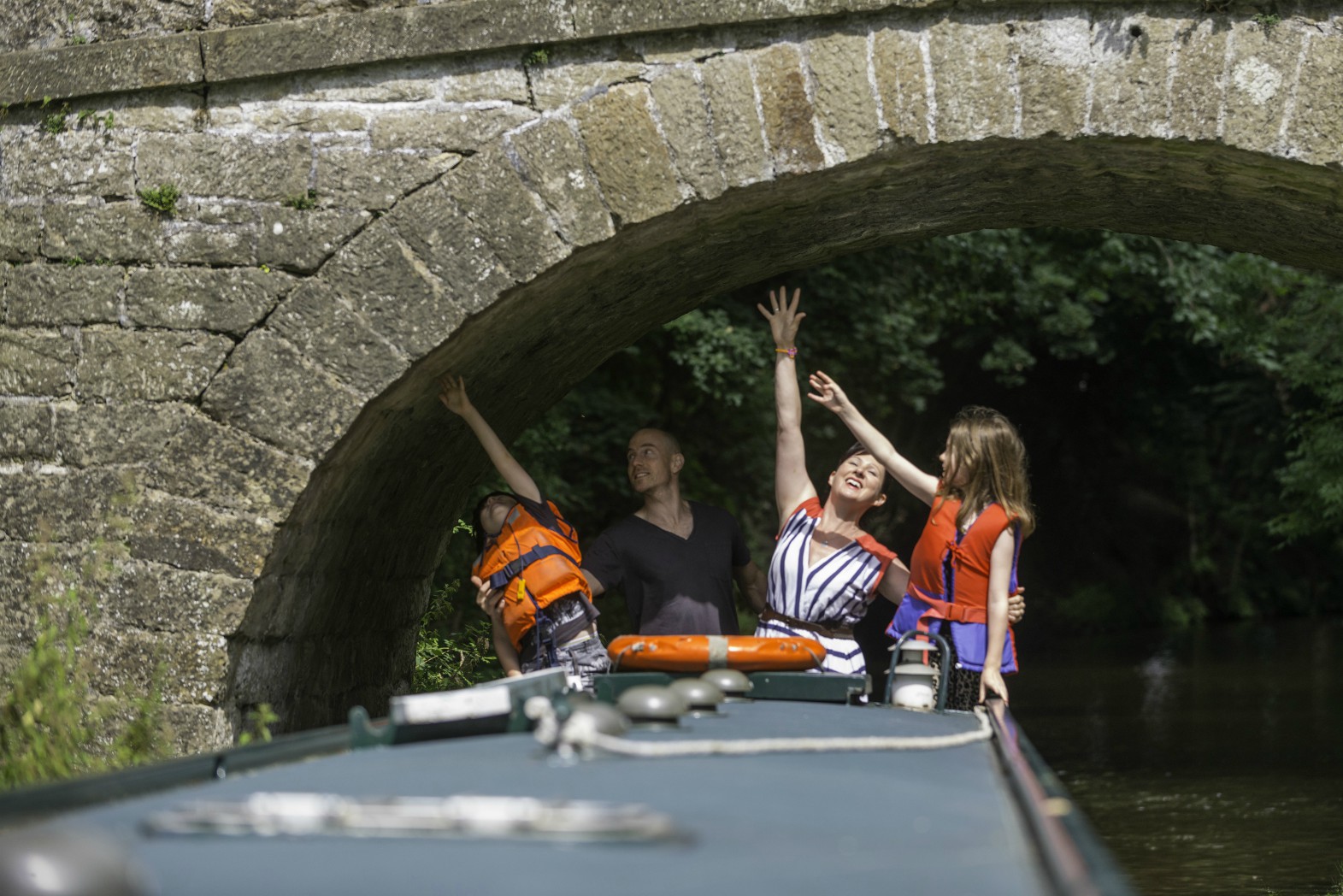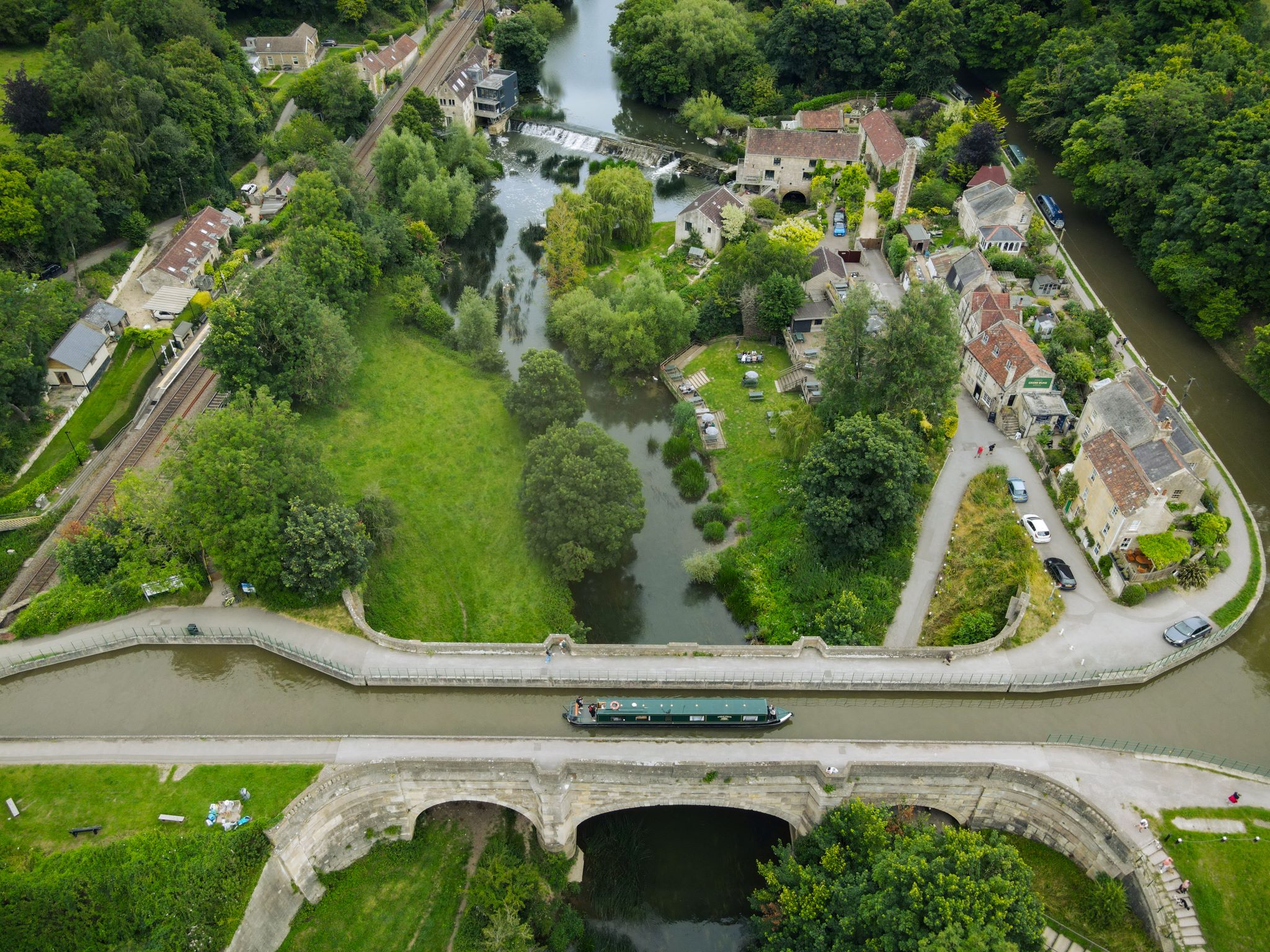Amazing Canal Facts

Amazing canal facts worth reading ahead of your narrowboat holiday
There are over 2,000 miles of navigable canals and rivers throughout England and Wales. This intricate network enables boats to travel the length and breadth of the country.
Across the network, there are 1,569 locks, 53 tunnels, 3112 bridges, 370 aqueducts and 74 reservoirs. Most were built over 200 years ago and have fascinating stories to tell. And feature many historic feats of engineering which still wow visitors today.
This is part of what makes a canal boat holiday so magical – a narrowboat takes you on a journey through history and human endeavor.
If you’e considering a canal boat holiday, why not first have a read of these amazing canal facts which will only add to the wonder of your experience.
1. The oldest working canal in the UK is about 1,900 years old
The Fossdyke Navigation, which runs between Lincoln and the River Trent at Torksey, was built by the Romans in around AD 120. Still in use today, it extends 11.3 miles, with one lock and formed part of a key transport route from Peterborough to York.
It is said to have been used by the invading Danes and the Normans to carry stone to build Lincoln Cathedral in the 11th century. The canal was revamped under King Henry I in 1121, but then fell into disrepair and silted up. By the 17th century, it was virtually impassable. In 1744 a proper channel was restored and maintained and the canal has remained navigable ever since.
2. The longest canal tunnel in the UK runs for more than 5,000 metres/3.5 miles
The Standedge Tunnel on the Huddersfield Narrow Canal is the longest, deepest and highest canal tunnel in Britain. Built over 16 years from 1794 to 1811, it stands at 196 metres above sea level, at a depth of 194 metres beneath the Pennines. The canal was closed to traffic in 1943 and re-opened in May 2001. You can learn more about this 19th century wonder of engineering at the Standedge Tunnel Visitor Centre.
3. Britain’s longest aqueduct extends more than 300 metres/1,000 ft
Deservedly described as the jewel in the crown of Britain’s canals, the awe-inspiring Pontcysyllte Aqueduct carries narrowboats on the Llangollen Canal at a soaring 38 metres – 126 ft – above the River Dee, offering stunning views of the valley and surrounding hills. Designated a UNESCO World Heritage Site in 1999, the 18-arch aqueduct was designed by legendary civil engineer Thomas Telford and built between 1795 and 1805.
Located right next to our narrowboat hire base at Trevor, this is a spectacular way to start or finish a canal boat holiday from this idyllic location.
4. The longest lock flight in the UK is 30 locks long
The Tardebigge lock flight enables the Worcester & Birmingham Canal to ascend 67 metres (220 feet) over a 2.25 mile stretch. Built between 1808 and 1815, the lock flight enabled an extension of the canal from Birmingham to the River Severn at Worcester to be completed. Until the lock ladder was constructed, originally with a boat lift in place of the 3.4-metre (11 feet) top lock, the canal only travelled as far the Old Wharf next to Tardebigge Tunnel.
5. The longest UK canal runs for 137 miles
The Grand Union Canal links London with Birmingham via Milton Keynes, Northampton and Leamington Spa. It would take about 74 hours to cruise the whole length non-stop. The canal winds its way through rolling countryside, idyllic towns and villages with 158 locks and striking historic features including the Iron Trunk Aqueduct, the steep Hatton Lock Flight and The Canal Museum at Stoke Bruerne.
The name of the canal offers a clue as to its origins, for it was not built as one waterway but was the result of connecting existing waterways to create an uninterrupted link between the industrial heartlands of Birmingham and the west midlands with the capital.
The longest canal in Britain built as a single waterway is the Leeds & Liverpool Canal at 127 miles long.
6. The newest canal in the UK was completed in 2002
The Ribble Link was built to connect the previously isolated Lancaster Canal with the rest of the national inland waterways network. It runs for just four miles from Preston to the River Ribble which then connects to the Leeds & Liverpool Canal.
With nine locks, the Ribble Link is tidal so only navigable at certain times with advance booking needed as all boats must be helped through. A link between the Lancaster Canal and the wider canal network was first discussed 200 years ago. This new canal finally came to fruition in 2002 with the help of a grant from the Millennium Commission.
7. Britain’s shortest canal is just 22 metres – or 72 feet – long
The Wardle Lock Branch of the Trent & Mersey Canal consists of just one 72ft-long lock and a few yards of canal on either side. It was built in 1829 to link the Trent & Mersey Canal with the Middlewich Branch of the Shropshire Union Canal.
8. A cow once swam the whole length of the Foulridge Tunnel
In 1912 a cow named Buttercup fell into the Leeds & Liverpool Canal near the southern end of the tunnel, carrying the waterway for a mile under the Lancashire countryside. Rather than climb out of the canal as normal, Buttercup swam all 1,500 metres to Foulridge at the northern end. On arrival, Buttercup was revived with brandy by locals drinking at the nearby Hole in the Wall pub.
9. Canals have plugs, literally
In 1978, a group of British Waterways workers who were dredging the Chesterfield Canal pulled up a chain which had a heavy lump of wood attached to the end. As the entire canal between Whitsunday Pie Lock and Retford Town Lock began to empty away into the River Idle, they realised they had pulled out a long forgotten canal plug. There’s also a plug in the Pontcysyllte Aqueduct.
10. There are more boats now on the UK canals than at any other time in history
While Britain’s industrial heydays of 18th and 19th century are generally viewed as the golden age of canals, there are actually more craft on our waterways today. Despite the canals being used by far less commercial traffic, they have become a mecca for pleasure craft and a growing number of people opting for floating homes. There are now around 35,000 boats on Britain’s canals and rivers, providing homes, workplaces and holidays for millions of people.
We’ve published more information about the history of the canals in England and Wales here.
Tags: Anglo Welsh, Canals, engineering, england, histoy, narrowboats, Pontcysyllte, uk, UK holidays, Wales, Waterways


